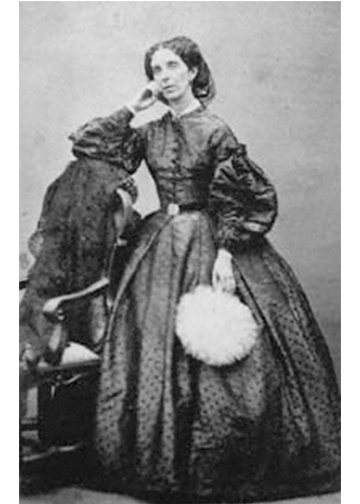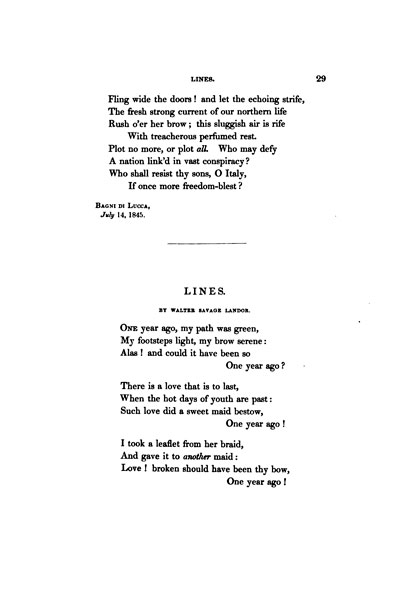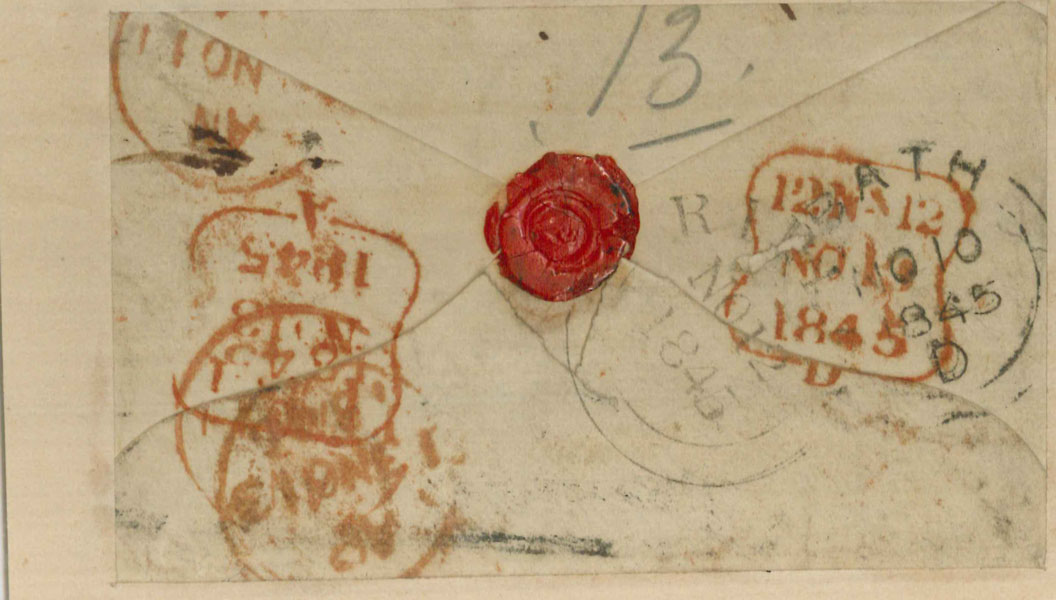Theodosia Garrow
“She Is Not Dead, But Sleepeth”
The Keepsake (1846)
Theodosia Trollope published her first book of poetry in 1839, and, for a time, her reputation rivaled that of Elizabeth Barrett Browning. Walter Savage Landor, nineteenth century English writer and poet, praised her poetry in a letter to Robert Browning: “This very year there is in the Book of Beauty a poem by my friend Theodosia Garrow, on Italy, far surpassing those of M. Angelo and Filicaia. Sappho is far less intense. Pindar is far less animated.”
Letter from Walter Savage Landor to Robert Browning
[10 November 1845]
Courtesy of the Armstrong Browning Library
Theodosia Garrow moved to Florence with her family in 1844, and in 1848 married Thomas Adolphus Trollope, brother of Anthony Trollope, one of the most successful novelists of the Victorian era. Their home, The Villino Trollope, in the Piazza dell’ Indipendenza, became the focal point of Anglo-Florentine society.
Like Elizabeth Barrett Browning, Theodosia found herself exposed first hand to the Italian struggle for freedom against Austria. She is probably best remembered for a series of letters praising the efforts of the Risorgimento in Tuscany and denouncing its opponents, including the papacy. These letters, published as Social Aspects of the Italian Revolution (1861), were instrumental in turning British public opinion in favor of the liberation and unification of Italy.
The ABL has two letters written by EBB to Theodosia. One of the letters [?6 June 1859], beginning “Your indignation cannot exceed mine — The reputation for truth of English gentlemen seems about to perish,” precipitates a politically charged letter written on the same day by Theodosia to William Johnson Fox concerning her sympathy with the Italian cause after the outbreak of fighting in 1859.
Letter from Elizabeth Barrett Browning to Theodosia Garrow
[?6 June 1859]]
Courtesy of the Armstrong Browning Library
Notes: Theodosia Garrow published a poem called “Bees” in the Book of Beauty in 1844, no poems in 1845, “Paolina. Song” in 1846, and “The Cry of Romangna” (which is about Italy) in 1847. She also published “Sonnet – Petrarch to Laura” in The Keepsake for 1944, “Mabel’s Dove” in The Keepsake for 1845, “She is not Dead, but Sleepeth” (also about Italy) in The Keepsake for 1846, and “The Lethe-Draught” in The Keepsake for 1847.











